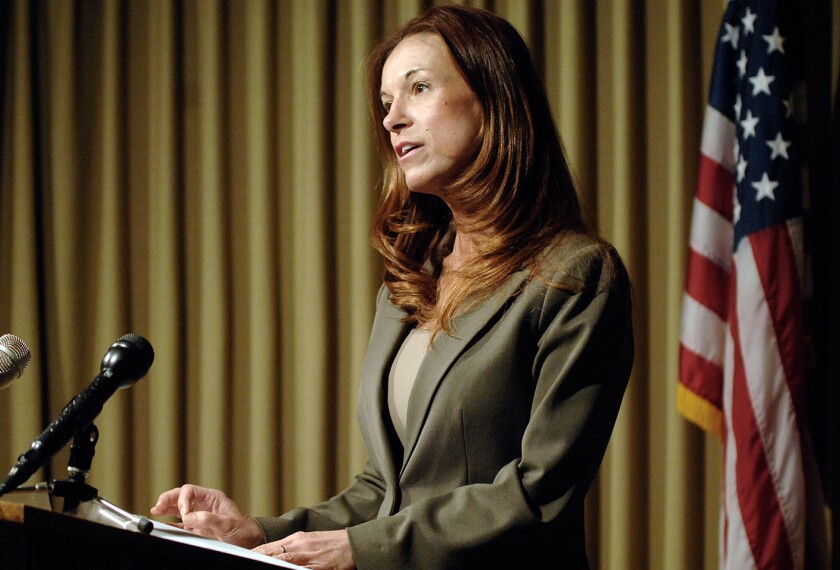Includes updates and/or revisions.
The U.S. Department of Education has identified four states that are at ŌĆ£high riskŌĆØ for economic-stimulus spending problems, according to a by the Government Accountability Office.
California, Illinois, Michigan, and Texas have been singled out for intensive technical assistance by the Education Department to help them implement good practices in using the federal money. The District of Columbia and Puerto Rico also made the departmentŌĆÖs list.
This latest report from the investigative arm of Congress examines implementation and accountability issues for a number of agencies and departments involving the $787 billion stimulus law, formally the American Recovery and Reinvestment Act. The Education Department oversees about $100 billion in such aid.
One of the first steps for the department was to identify ŌĆ£high riskŌĆØ states, which were selected because of indicators ŌĆ£such as the number of monitoring or audit findings in the state and the level of turnover in education leadership within the state,ŌĆØ the GAO report says.
For those states and the other jurisdictions, the Education Department is concerned about their use of all stimulus aid, from State Fiscal Stabilization Fund money, which is intended to help states cope with the impact of budget shortfalls, to smaller grant programs.
To help, the department will provide the four states, the District of Columbia, and Puerto Rico with financial and programmatic expertise, which could include site visits.
Cash Management Issues
Already, the GAO auditors have found problems involving cash management of stimulus funds in California and Illinois.
Illinois, for example, has apparently sent fiscal-stabilization money to school districts before they were prepared to spend the funds, which was identified as a red flag by auditors. According to the report, Illinois is responding by better tracking and reporting so they can monitor cash balances. State officials there didnŌĆÖt respond to a request for comment.
And some districts in California have large pots of stimulus funds sitting untouched after the state drew down 80 percent of its Title I aid and immediately sent the money to districts, apparently before they were ready to spend it.
The GAO auditors surveyed 10 California districts that had received the largest amounts of Title I aid and found that seven had not spent any, and that all 10 reported large cash balances, ranging from $4.5 million to about $135 million.
The GAO reported that California state officials have taken steps that include a pilot program to monitor school districtsŌĆÖ cash balances.
ŌĆ£WeŌĆÖve made significant progress in addressing these issues,ŌĆØ said Kevin Chan, the director of audits and investigations for the California education department. He added that his office was trying to heed President Barack ObamaŌĆÖs urgency to get the stimulus money out fast, but discovered that local school districts werenŌĆÖt prepared to spend pending guidance from the U.S. Department of Education.
Officials from Texas and the District of Columbia didnŌĆÖt know they had been singled out as ŌĆ£high riskŌĆØ for stimulus spending problems. Texas was told by federal officials it would receive intensive technical assistance because of its large size, said Debbie Ratcliffe, a spokeswoman for the Texas Education Agency. Chad Colby, a spokesman for the District of ColumbiaŌĆÖs state superintendent of education, said the District has been deemed ŌĆ£high riskŌĆØ for all federal education grants since 2006.
Meanwhile, in Michigan, education department spokeswoman Jan Ellis said her state was singled out primarily because of its large size, but that it ŌĆ£appreciates the additional technical guidance and is working closely with the federal government to ensure compliance.ŌĆØ
The department has also identified an additional 12 states as posing a ŌĆ£high riskŌĆØ in the use of Title I funds. They are Arkansas, Colorado, Delaware, Florida, Idaho, Louisiana, Massachusetts, Missouri, New Jersey, New York, North Carolina, and Oklahoma.




